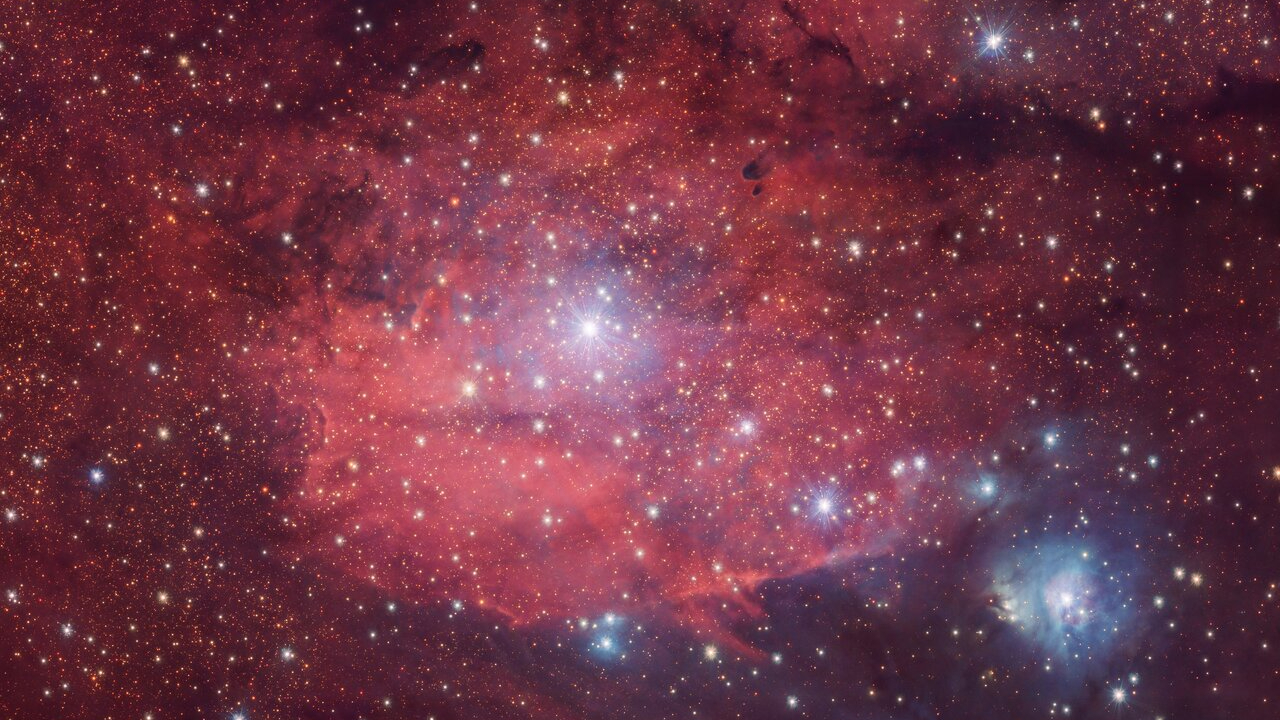Rosy red nebula glows in gorgeous new European Southern Observatory photo
The nebula takes center stage in a new photo by ESO's VLT Survey Telescope.

A rosy red nebula takes center stage in a new photo from the European Southern Observatory (ESO).
The expansive cloud of dust and gas, known as IC1284, is an emission nebula, a bright, diffuse cloud of ionized gas that emits its own light. This particular emission nebula, found at the center of the image, glows red from active star formation and the fusion of hydrogen in the region.
"Its rosy glow comes from electrons within the hydrogen atoms: they're excited by the radiation from young stars, but then they lose energy and emit a specific color or wavelength of light," ESO officials said in a statement.
Related: Amazing space views of ESO's Very Large Telescope (photos)
Astronomers photographed IC1284 using ESO's wide-field camera, called OmegaCAM, on the VLT Survey Telescope (VST) at the Paranal Observatory in Chile. (VLT stands for "Very Large Telescope.") Nebulae are made up of enormous clouds of dust and gas, which fuel new star formation. In the new image, the warm red glow of IC1284 is dotted with bright twinkling stars all around it.
IC1284 is joined by two blue reflection nebulae, known as NGC6589 and NGC6590, located in the lower right corner of the new VST image. Compared to emission nebulae, the clouds of interstellar dust in reflection nebulae reflect the light of a nearby star or stars, creating the distinct blue color observed.
"The dust in a reflection nebula preferentially scatters shorter, bluer wavelengths of light from nearby stars, which is what gives these nebulae their eerie glow," ESO officials explained in the statement. "It's the same reason why the sky is blue!"
Get the Space.com Newsletter
Breaking space news, the latest updates on rocket launches, skywatching events and more!
The new image, released on Tuesday (Oct. 2), was captured as part of a larger initiative organized by ESO, called the VST Photometric H alpha Survey of the Southern Galactic Plane and Bulge (VPHAS+). The survey is aimed at observing nebulae and stars in visible light to help astronomers understand how stars are born, live and die, according to the statement.
Join our Space Forums to keep talking space on the latest missions, night sky and more! And if you have a news tip, correction or comment, let us know at: community@space.com.

Samantha Mathewson joined Space.com as an intern in the summer of 2016. She received a B.A. in Journalism and Environmental Science at the University of New Haven, in Connecticut. Previously, her work has been published in Nature World News. When not writing or reading about science, Samantha enjoys traveling to new places and taking photos! You can follow her on Twitter @Sam_Ashley13.









